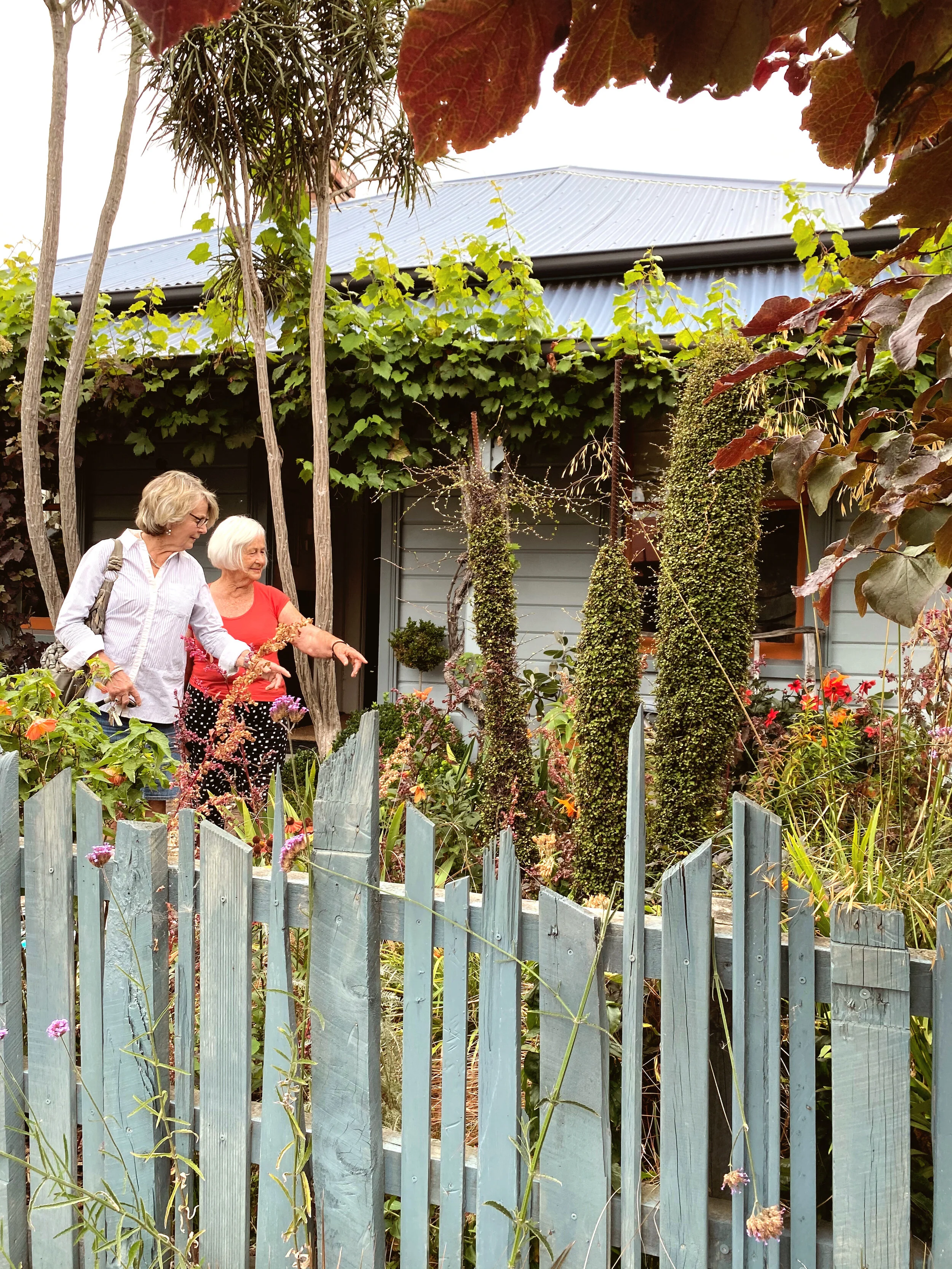Handy tips from those that know
/The only thing that is completely certain in gardening, is that, with time, you will learn something.
It is unavoidable – and quite reassuring for those of us starting out, wondering if it’s possible to get a grip on any of it!
With that said, there are so many passionate gardeners in front of us that have already been banking knowledge, discovering helpful ideas and approaches that can make our own adventure a little easier from the start.
I have had many a lightbulb moment when listening to general chat between long time growers, so I thought I’d knock on the door of a few and find some titbits to share here with you.
Penny ZIno in her garden in North Canterbury.
The back door at Flaxmere garden .
A dash of bright!
During one of the regular garden-based Q&As that I engage my mum in, she mentioned that a dash of neon spray paint on the handles of trowels and spades helps hugely in locating them during big garden clean ups.
I instantly thought of the niwashi tool that I lost in my garden for a month, camouflaged in soil and leaves.
Plant – a lot
Jill Simpson of the magical Fisherman’s Bay Garden on Banks Peninsula, offered me further guidance.
“When I was young and worked in a nursery, my boss said; “just learn one plant at a time” and over a lifetime that has added up. It’s impossible to know everything, but accumulating that knowledge helps now as I look at what I want to achieve.
“My advice to new gardeners is to plant lots, as much as you can buy, beg, or propagate – as only by growing something do you truly understand what it does and likes. You can always remove it, but plants take time to grow and there is never enough time.”
Beauty in the Puriri Lane garden of Deb Sisam - Credit: Deb Sisam
Soak those roots
Deb Sisam of Puriri Lane Nursery in Drury, near Auckland, had some great advice to impart.
“One tip I got from my grandmother, is when you are transplanting you should soak the plant in a bucket of water and wait until all the bubbles disappear to ensure that the centre of the root ball is well watered before planting.
“I still do this today but have actually modified it a bit and use one capful of Seasol in a bucket of water as that really helps with transplant shock.”
Make things easy
Penny Zino of Flaxmere Garden in Canterbury suggests, when possible, to get new plants in the ground in autumn instead of waiting until spring. This allows them time to settle and establish roots without the stress of dry periods that arrive with the warmer months.
Zino also offered: “Having a little place to pot up cuttings and new seedlings is also a game changer which can save a lot of money.
“I am loving my restored glass house with two benches at waist height, making it is so easy to be there when the weather is cold, and I am amazed at how many new plants I have created!”
The garden at Puriri Lane - Credit: Deb Sisam
Embrace mulch
Both Zino and Jennifer Horner from Puketarata Garden in Taranaki, say mulching is something to get a handle on early. Compost is great for smaller urban gardens, while those mulching on a larger scale might find pea straw a more affordable option.
Doreen and Mike Dryden, from Loch Leven Garden in North Canterbury, also demonstrated to me the great worth in linseed straw, which, being a little denser doesn’t get mucked around by birds to the same extent or whisked away in a raging nor ’wester!
It is ideal to get on top of mulching in autumn in preparation for springtime growth.
Tips for winter gardening
Michael Coulter, an experienced nurseryman and gardener who I met through the Canterbury Horticultural Society, offered terrific tips for gardening over winter. This is a great period to add lime to soil and to plant bare rooted trees and roses.
During frosty periods, avoid walking on lawn to prevent creating dark burn marks, and in the wet, lay a plank of wood for walking on when harvesting veges to prevent soil getting compacted. Save pruning fruit trees and roses until conditions are dry to stop the spread of disease.
Penny Zino and Robyn Kilty in Robyn’s Christchurch garden .
Dream big
Lastly, some encouragement from fantastic, creative gardener; Robyn Kilty. “It’s about visualisation. Have a mental picture in your head of how you want the garden to look in the spring, and working towards that.
“This is especially applicable in winter when perennials have died down and the general green leafiness has gone, leaving the bones of your garden bare! It’s at this time when you can really see your garden, warts and all, for what it really is.
“From here you can start to plan, imagine and visualise the difference and see in your mind how much better you can make it look for next season. And that’s all about anticipation and imagination!“
In my experience, advice from gardeners that live in my own area is unrivalled in its relevance. But for those yet to make these connections, the internet and You Tube offer incredibly handy tips that might otherwise be left out of books.
It won’t be long before you have helpful hints to share too.
This article was first featured in my Stuff ‘Homed’ gardening column for beginners , The Press, Dominion Post and other regional papers on July 1st 2021
All words and images are my own, taken in my home and garden in Christchurch, New Zealand unless otherwise captioned.







